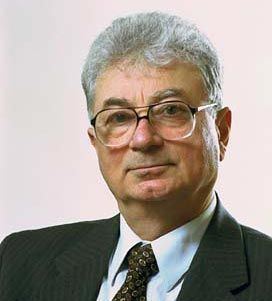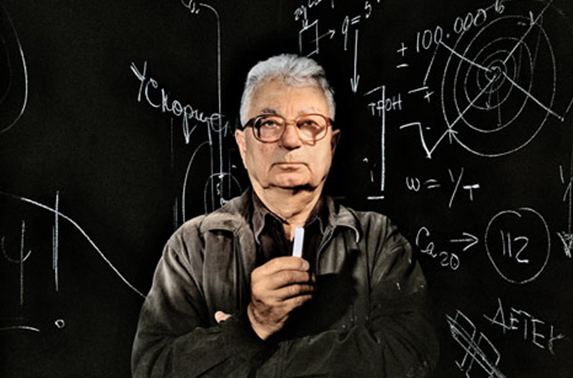Name Yuri Oganessian | ||
 | ||
Institutions Flerov Laboratory of Nuclear Reactions Alma mater National Research Nuclear University MEPhI Institution | ||
The Element Creator - Periodic Table of Videos
Yuri Tsolakovich Oganessian (Russian: Юрий Цолакович Оганесян; born 14 April 1933) is a Russian nuclear physicist of Armenian descent, who is considered the world's leading researcher in superheavy chemical elements. He led the discovery of the these elements elements in the periodic table. He succeeded Georgy Flerov as director of the Flerov Laboratory of Nuclear Reactions at the Joint Institute for Nuclear Research in 1989 and is now its scientific leader. The chemical element Oganesson (Og, atomic number 118) was named after him in 2016.
Contents
- The Element Creator Periodic Table of Videos
- Elements Inauguration Periodic Table of Videos
- Early life
- Career
- Oganesson
- Honors and awards
- Personal life
- References

Elements Inauguration - Periodic Table of Videos
Early life

Yuri Tsolakovich Oganessian was born in Rostov-on-Don, Russia, on April 14, 1933 to Armenian parents. His father was from Rostov, while his mother was from Armavir. Oganessian spent his childhood in Yerevan, the capital of then-Soviet Armenia, where his family relocated in 1939. His father, Tsolak, a thermal engineer, was invited to work on the synthetic rubber plant in Yerevan. When the Eastern Front of World War II broke out, his family decided to not return to Rostov, which was occupied by the Nazis. Yuri attended and finished school in Yerevan.
Career

Oganessian is the scientific leader of the Flerov Laboratory of Nuclear Reactions (FLNR). He invented cold fusion in one-atom-at-a-time nucleosynthesis (not related to the similarly-named pseudoscientific claims) around 1970 and pioneered hot fusion in the late 1990s. In 2009, scientists in the United States confirmed Oganessian's team's discovery of flerovium over a decade before. He is a researcher in islands of stability. He continues to search olivine in pallasites hoping to find superheavy elements (or their fission tracks) in nature.
Oganesson

The first decay of atoms of oganesson was observed in 2002 at the Joint Institute for Nuclear Research, by a joint team of Russian and American scientists. Headed by Oganessian, the team included American scientists of Oak Ridge National Laboratory, Tennessee, and the Lawrence Livermore National Laboratory, California. The International Union of Pure and Applied Chemistry (IUPAC) announced in November 2016 that element 118 would be named oganesson to honor Oganessian. Prior to this announcement, a dozen elements had been named after people, but of those, only seaborgium was likewise named while the person (Glenn T. Seaborg) was alive.
Honors and awards

In 1990 he was elected Corresponding Member of the Soviet Academy of Sciences and in 2003 a Full Member (Academician) of the Russian Academy of Sciences.
Oganessian holds honorary degrees from Goethe University Frankfurt (2002), University of Messina (2009), Yerevan State University.
Personal life
Oganessian was married to Irina Levonovna, a violinist, with whom he had two daughters.
